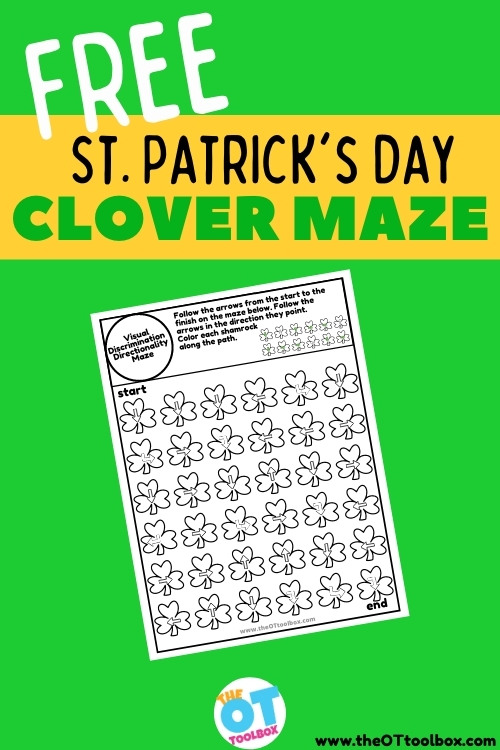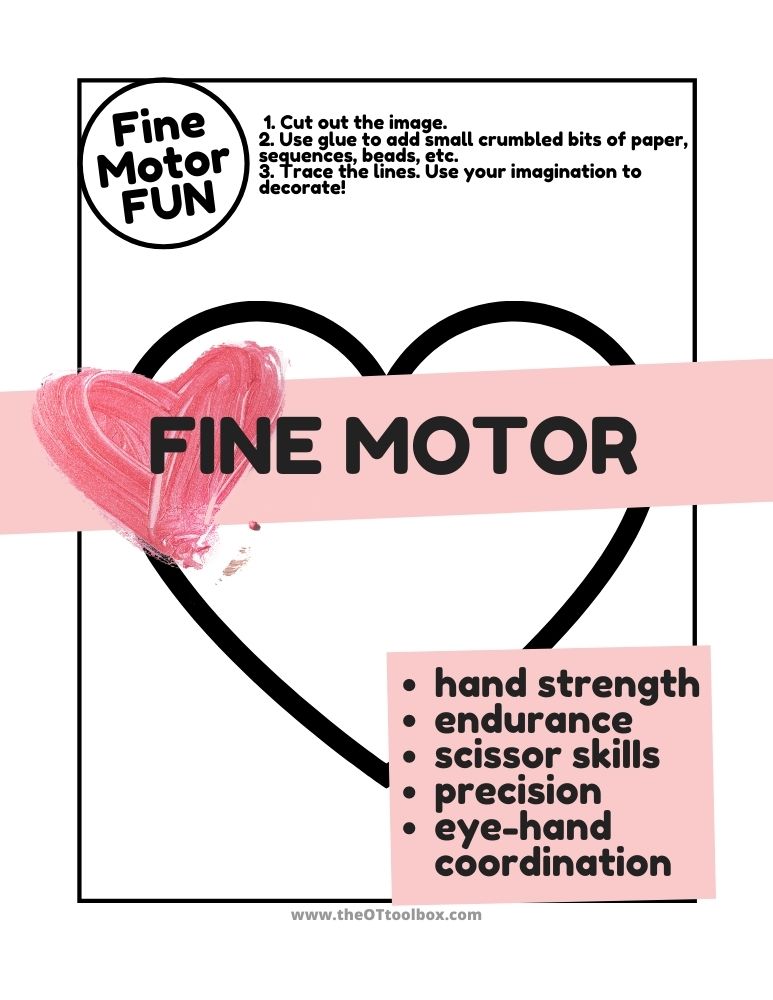What better way to work on visual perceptual skills AND handwriting, than by adding this blank word search template to your treatment plans? If you’ve seen some of the other St. Patrick’s Day activities on the site this week, then you can add this activity to your March OT lesson plans.

The OT Toolbox has a lot of St. Patrick’s Day activities including this blank word search template.
- Shamrock crafts
- Clover and Rainbow Clip Cards– work on fine motor and bilateral coordination skills
- Rainbow Template– for pencil control, direction following, and more.
- Shamrock Directionality Maze– Great for so many visual perceptual skills and coloring
Plus you’ll find more free downloads in our Spring Activities headquarters.
BLANK WORD SEARCH TEMPLATE
When my girls were young, I was forever searching for ways to make their homework more fun, especially while learning spelling words. Straight repetition and memorization might work for some learners, but for the rest, there needs to be more engaging ways to improve working memory for retention of information.
How can you use this blank word search worksheet?
What I love about simple worksheets like this blank word search PDF template, is the flexibility and usability it offers.
By thinking outside of the box, dozens of treatment ideas can be created! (This type of activity analysis would be a great project for therapy students or new teachers).
- Use current spelling words on your learner’s list for the clues to the wordsearch
- Add thematic words to your grid (winter, animals, foods, colors, clothing)
- Write random letters in the grid and use this as a scanning task (find all the A’s)
- Have learners create a grid for other students to use. This works on critical thinking skills, as well as promoting neatness and accuracy
- Use the printable blank template as a grid for working on letter sizing, letter formation, and neatness
- Work on speed and dexterity by seeing how many letters/dots/numbers they can write in a given amount of time
- Use dot markers for accuracy either with a blank grid or while searching for letters or words
- Laminate the page for reusability and eco friendliness
- Extend the activity by having students write a sentence after finding each word, draw a picture, or define the words
- Younger learners do not need to be able to read or spell these words, this will be a copying and visual memory task for those who can not read
- Try presenting this without including a word bank. See how many words your learners can find without clues, or remember what words are on their spelling list
- Enlarge this template onto a smart board for group work, encouraging students to come to the board, and write vertically
- What other ideas can you come up with?
What is your objective using this blank word search?
As always, shift your focus and observations toward the skills you are building. In this task it could be:
- Fine motor: letter formation, handwriting, grasping, copying from a model
- Visual perception:scanning, figure ground, visual memory
- Sensory: arousal level, pressure on paper/pencil, seating position
- Speed and dexterity
- social/emotional skills, following directions, frustration tolerance
- Executive function: organizing work, work completion, task analysis
- Strengthening, bilateral coordination
- Any combination of the above, or something entirely different
If your main objective is visual perception, check out this huge visual processing bundle offered in the OT Toolbox.
what and how to document session using this blank word search page
Using this blank word search in therapy sessions covers a variety of areas and goals. But how do you document? And what do you look for when using a tool like this in therapy sessions?
Here are a few things to watch for when learners use this resource:
- Document in real numbers, percentages, and actual data
- Accuracy of finding the words
- Timing for finishing the task
- Amount of physical and/or verbal assistance
- Grasping pattern
- Sensory skills/problems
- Behavior, social function
The resources available for individuals/members visiting the OT Toolbox, are great for new teachers/therapists who feel overwhelmed, needing an organized direction for making awesome treatment plans.
Don’t forget seasoned professionals who are burned out, or looking for quick and easy printables, PDF templates, and activities. Whatever category you fit in, whether you are a professional or parent, the OT Toolbox has you covered!
more ideas for your St. Patrick’s Day themed lesson plan
Sticking with the winter theme and tired of Frozen songs and worksheets? Try our Spring Fine Motor Kit full of flowers, butterflies, rainbows, and Spring fun. These reproducible activity pages include: pencil control strips, scissor skills strips, simple and complex cutting shapes, lacing cards, toothpick precision art, crumble hand strengthening crafts, memory cards, coloring activities, and so much more.
Understanding why you are doing treatment, what goals you are working on, how to assess and grade each task, document the lesson plan, and troubleshoot the activities, are the most difficult (and important) parts of treatment. Picking a worksheet is easy, knowing how to use it is where skill is involved. That is why it is so awesome that these tools are readily available. No need to keep reinventing the wheel.
Use the resources available to you at the OT Toolbox, or wherever else you search for quality materials, then take a moment of free time to listen to the Spring raindrops. Grab those Spring fine motor printables, then settle in with a book and a cup of cocoa.
Free Blank Word Search
Want to add this resource to your therapy toolbox so you can help kids thrive? Enter your email into the form below to access this printable tool.
This resource is just one of the many tools available in The OT Toolbox Member’s Club. Each month, members get instant access to downloadable activities, handouts, worksheets, and printable tools to support development. Members can log into their dashboard and access all of our free downloads in one place. Plus, you’ll find exclusive materials and premium level materials.
Level 1 members gain instant access to all of the downloads available on the site, without enter your email each time PLUS exclusive new resources each month.
Level 2 members get access to all of our downloads, exclusive new resources each month, PLUS additional, premium content each month: therapy kits, screening tools, games, therapy packets, and much more. AND, level 2 members get ad-free content across the entire OT Toolbox website.
Join the Member’s Club today!

Victoria Wood, OTR/L is a contributor to The OT Toolbox and has been providing Occupational Therapy treatment in pediatrics for more than 25 years. She has practiced in hospital settings (inpatient, outpatient, NICU, PICU), school systems, and outpatient clinics in several states. She has treated hundreds of children with various sensory processing dysfunction in the areas of behavior, gross/fine motor skills, social skills and self-care. Ms. Wood has also been a featured speaker at seminars, webinars, and school staff development training. She is the author of Seeing your Home and Community with Sensory Eyes.
*The term, “learner” is used throughout this post for consistency. This information is relevant for students, patients, clients, preschool, kids/children of all ages and stages, or whomever could benefit from these resources. The term “they” is used instead of he/she to be inclusive.






